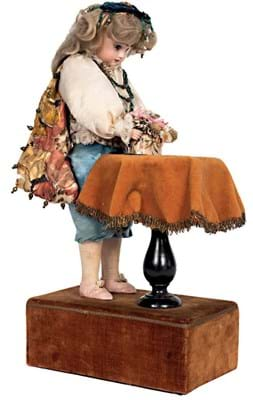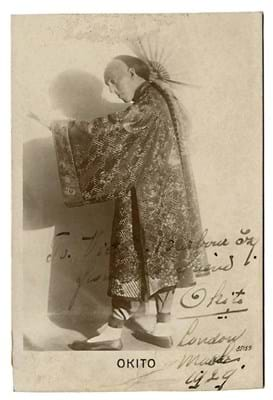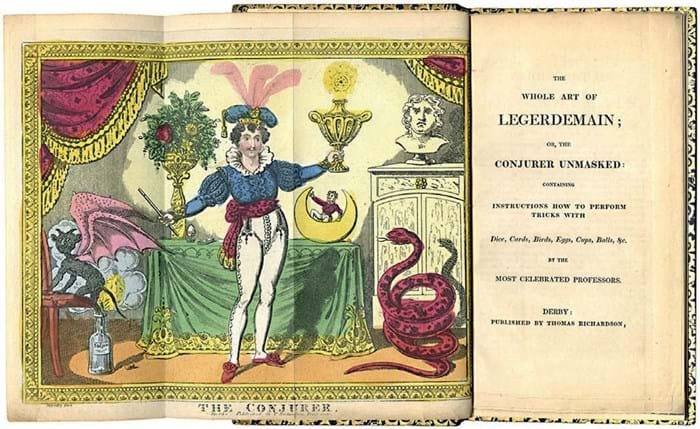The latest summer offering, on August 25, featured an eclectic 460-plus lots of books, specialist apparatus, posters, archival material and ephemera – many with strong European interest.
A Servais LeRoy & Co illusion instruction archive from 1912 doubled its low estimate to make $9500 (£7420). This collection included typed and manuscript instructions and advertisements for illusions, gimmicks, pocket, and parlour tricks sold and manufactured by this short-lived but important London-based magic company.
Jean Henri Le Roy began his career in Belgium but later moved to the UK capital where he established a supply house for illusions and scenery in the Hatton Garden area.
Ephemera related to the Dutch magician Okito (1875-1963) sold well. Okito was the stage name of Tobias Bamberg, a sixth-generation magician who performed his Asian-themed act entirely in pantomime.
A 1929 photo postcard of a costumed Okito, in a wig with prominent queue and a fan in one hand, signed and inscribed to his best customer and friend, Victor Barbour, sold for $2000 (£1560) – five times its low estimate.
Other items included an early 20th century French wind-up bisque-headed child conjuror which made $3400 (£2660) against a $300-500 estimate.
Books to amaze
The auction included more than 150 rare and important magic books.
As previewed in ATG No 2354, a 19th century rarity, The Whole Art of Legerdemain or the Conjuror unmasked, was published by Thomas Richardson of Derby c.1830. It sold within estimate at $2600 (£2030).
One of the best performers in this section was Prof Louis Hoffmann’s signed copy of Jean Eugène Robert- Houdin’s Les Tricheries Des Grecs Dévoilées, published by J Hetzel in Paris in 1863. Estimated at $300- 500, it made $2200 (£1720).
French conjurer Robert-Houdin is known as ‘the father of modern magic’. His innovations inspired countless magicians, with the most notable example being Ehrich Weiss, who took the name Harry Houdini in his honour.
Prof Hoffman was born in London in 1839. Described by Houdini as ‘the Brightest Star in the Firmament of Magical Literature’, he wrote nearly all of his dozens of books and scores of magazine articles under his pseudonym. His real name was Angelo John Lewis and he was actually a barrister by profession.
Going within estimate at $7000 (£5470) was Reginald Scott’s The Discoverie of Witchcraft, printed in London for A Clark, third edition, marked to be Sold by Dixy Page at the Turk’s-Head in Cornhill near the Royall Exchange, 1665.
Paul Daniels connection
One of the highest results for an item with a British connection came for Bob Swadling’s Magic Kettle which made $18,000 (£14,060) against an estimate of $10,000-15,000.
This mechanically-complex vessel designed and constructed by Swadling allows the magician to pour four different beverages. It was used by Paul Daniels (1938-2016) on British TV in 1979. Audience members sat at a bar, behind which the magician stood, and were asked to call out the names of drinks they wished to sample.
Daniels then produced them from the kettle, one after the other, immediately passing them out to the audience for verification.
The effect, popularised by Scottish professional magician John Henry Anderson (1814-74) and Robert-Houdin (1805-71), proved to be just as popular when Daniels presented it over a century later.
Daniels (1938-2016) died in March 17, 2016, from a brain tumour. This kettle is one of the items in this auction that were sold by Swadling to help defray the costs of care for Sebastian Midtvaage, a young magician who also has a brain tumour.
£1 = $1.28



















